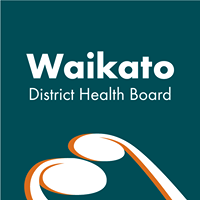Summer Cyanobacterial Warning
Media information
For immediate release
With the warm weather this summer, Waikato's shallow lakes are being monitored more frequently for cyanobacteria (blue-green algae).
Due to the raised and rapid changes in the levels of cyanobacteria in the lakes, current warnings remain in force for Waikare, Whangape, Kainui, Hakanoa, Waahi and Ngaroto Lakes.
"Users of all shallow lakes in the region should increase their caution and have a good look at the water before taking part in any activity which involves direct water contact in these lakes," said Waikato District Health Board medical officer of health Anita Bell.
"People should always avoid contact with water that looks cloudy green or brown, or has scum forming, even when there is no warning in place."
Most lakes are not tested and water users must consider the possibility of cyanobacterial blooms in any water body before using it.
Dr Bell reminds lake users that test results should be used for general guidance only, as cyanobacteria and their toxins will not be evenly spread through any lake and may be concentrated in some areas by wind and water movements.
"During blooms, lakes should not be used for any activity which involves skin contact with the water. If people choose to do this, they should shower and change their clothing as soon as possible afterwards, even if no symptoms are noticeable," she said.
Swallowing water from lakes affected by blooms should also be avoided.
"While not everyone will be affected, for some the risks are of rash and skin irritation, eye irritation, allergic symptoms such as hayfever and asthma and possibly stomach upsets such as diarrhoea and vomiting," said Dr Bell.
These effects may not appear until some time after contact with the affected water.
Up-to-date information on cyanobacterial cell counts is available from local councils and Environment Waikato.
Visit www.ew.govt.nz/enviroinfo/water/healthyrivers/waikato/algalbloom/ for more information.
Health advice is available from the Public Health Unit (07) 839 8899 during and out of hours.
ENDS



 Gordon Campbell: On unemployment, Winston Peters’ low boiling point and music criticism
Gordon Campbell: On unemployment, Winston Peters’ low boiling point and music criticism Labour Party: National Gaslights Women Fighting For Equal Pay
Labour Party: National Gaslights Women Fighting For Equal Pay The Treasury: New Treasury Paper On The Productivity Slowdown
The Treasury: New Treasury Paper On The Productivity Slowdown NZ Government: Government Recommits To Equal Pay
NZ Government: Government Recommits To Equal Pay Emily Ireland - Local Democracy Reporter: Deputy Mayor ‘disgusted’ By Response To Georgina Beyer Sculpture
Emily Ireland - Local Democracy Reporter: Deputy Mayor ‘disgusted’ By Response To Georgina Beyer Sculpture Te Pāti Māori: Māori Unemployment Rate Increases By More Than Four-Times National Rates
Te Pāti Māori: Māori Unemployment Rate Increases By More Than Four-Times National Rates Government: Streamlining Building Consent Changes
Government: Streamlining Building Consent Changes


